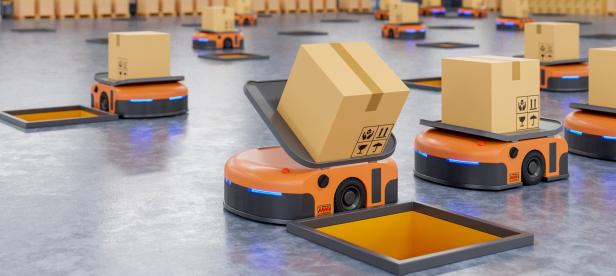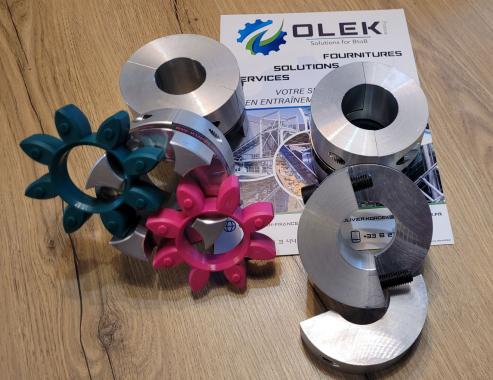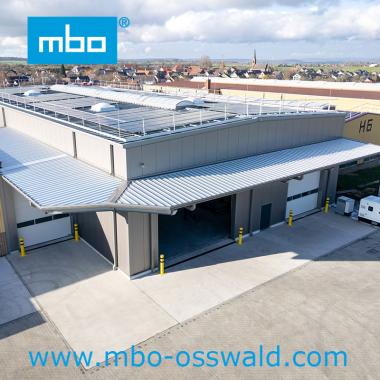Successfully incorporating Industrial Robotics in your Production

How to intelligently integrate industrial robotics into its production?
Far from the robots that rule the world, industrial robotics at the start of the decade nevertheless takes on major challenges in improving the working conditions of humans while increasing business productivity. The integration of robots and cobots into industrial manufacturing processes, handling and the performance of operations hazardous to safety and health is not as simple as it seems. The uses are infinite, but are chosen in line with the expectations and needs of employees. Robotics 4.0 is and will never be an alternative to job creation, but remains a great tool to propel companies into a more serene and productive future.
Different robots for multiple uses
The robot has evolved and now works alongside humans. It enables real human-machine collaboration and reveals a new vision of workstations and even of the company.
It is not, however, a new colleague, but rather a tool to be considered as such.
Robotics 4.0 sees the birth of different types of robots or cobots, for collaborative robots, depending on the uses:
Teleoperated robots carry out a mission under the directives of the operator who only interacts with the robot. The robot replaces the human on dangerous, difficult or precision tasks with continuous control of the operator. Example of the robot used in medicine to assist the surgeon in a delicate operation.
Collocated cobots operate in isolation from the operator. Robot and human present different missions, but work on the same task. There is no man-machine interaction since the robot is programmed to know what to do. Example of the robot that presents a part to the operator in different positions and the latter performs operations on it.
Robots in co-manipulation . Robot and operator work on the same task with constant interactions between them and different precise missions. Example of heavy load handling.
Robots in exomanipulation. The robot does not intervene on the task itself. The operation uses the robot as a kind of exoskeleton to increase its capacities or reduce its fatigue. Example of the operator who puts on an exoskeleton to easily move heavy loads.
These different uses show a growing human-robot proximity and a multitude of possible interactions for as many services rendered.
What are the benefits of industrial robotics for a company?
Industrial robotics is a great tool that brings many benefits to companies :
Reduction of the difficulty of certain tasks such as handling heavy loads or the repetition of actions that can be automated.
Improved workplace safety by avoiding employee exposure to toxic fumes, a deafening environment or the risk of burns, cuts, falls, etc.
Preservation of the health of the collaborators by the realization by the robots of tasks which are at the origin of musculoskeletal disorders and occupational diseases.
Increased flexibility at each stage of the production chain due to the modularity of a robot. He can change workstations by simply reprogramming. He does not need to learn or understand what to do. Your processes can evolve and the production rate increases, your robot adapts in response to your changes.
Increase in the quality of finished products by the regularity of carrying out the actions entrusted to the robot, in the same way that classic industrial robots have been used for a long time in the automation of certain tasks.
Reduction of production costs . The robot has a major advantage over humans. He is precise, regular, tireless and knows how to reproduce a task infinitely with a constant level of perfection. The amount of scrap decreases, as well as losses, you save money.
Gain in profitability . The robot still has other advantages over the human. It is also from these observations that the fears of certain employees are born. Operational 24 hours a day, 7 days a week, never sick or constrained by personal imperatives, robots increase the productivity, profitability and competitiveness of companies that use them wisely.
Industrial robotics thus presents a multitude of advantages to help you develop a company of the future that puts its employees at the heart of its concerns to gain in efficiency, comfort and get a head start on its competitors.
How to involve employees in the integration of cobots?
Change scares. Whether it's the arrival of a new employee, a change in management, an innovative working method or even the arrival of a cobot in the team, the first reaction of most employees live in fear, aggressiveness and refusal.
Avoid fear at all costs
To respond to this cognitive bias, which evolves more slowly than technology, you must, as a team leader or business manager, involve your employees upstream and downstream of your approach.
Very early in your reflection process, you will ask your collaborators to find out:
Their expectations to simplify their tasks and make their missions less arduous
Difficulties encountered on a daily basis
Ideas they may have already had to improve processes.
This collaborative brainstorming will allow you to bring the idea of using industrial robotics to your manufacturing, assembly, verification and shipping lines, but also to understand what the real needs are.
Why invest tens of thousands of euros in a cobot that does not improve the productivity or comfort of your employees?
Implementing a change management process will save you a lot of disappointment. We also speak, in the case of industrial robotics, of a co-design approach that contributes to building the future activity of employees together.
What you must absolutely avoid: that your employees think that they are going to train the robot and will then be made redundant!
Accept the reality on the ground
The numbers prove it. Companies that have fully integrated cobots and other robots into their business have not experienced layoffs. On the contrary, the employees are satisfied with the evolution of their workstation . New recruits are also arriving, as industrial robotics creates new jobs instead of eliminating them.
Continually value your employees by explaining to them that it is their know-how and their expertise that you want to use on a daily basis. They have much better things to do than repeat the same task over and over again or risk their safety and health. A cobot can replace them.
To support you in this process, contact scientific experts in robotics and ergonomics . You will then understand the importance of the human operator interface in order to transform your involvement in robotics 4.0 into a success.
What are the limits of today's robots and their prospects?
Industrial robotics is only in its infancy, even if it represents a strategic development axis for many companies, from SMEs to TGEs .
International groups, such as Safran, which specializes in high technology, and Amazon robotics with its 800,000 employees worldwide for 200,000 robots, recognize that they are beginning to set up collaboration between man and machine.
Far from the futuristic films of the 80s which imagined 2020 as a world in which robots would almost be in power, why is industrial robotics finally struggling to integrate into our traditional production methods?
The robot is not about to replace the human
The replacement of humans by robots has never been one of the objectives of industrial robotics.
Robots and cobots appear to be intelligent, but in reality they do not exist without the presence of humans and the proper functioning of the human-machine interface.
The collaborative side is only possible with the support and know-how of the human.
This observation is good news since robots improve the well-being of employees at work while allowing them to focus on interesting tasks. A real help to promote and integrate into the companies of the future.
A more serene future for man
Robots reduce the drudgery of work for humans by carrying out boring or dangerous tasks in their place. Little by little and with the generalization of industrial robotics, certain sectors of activity deemed to be painful will gain in attractiveness . Constraining missions and those having an impact on human health will be a bad memory.
The employee will know that he occupies a position for which his skills are essential and that his know-how can never be compared with that of a robot , despite the prowess possible thanks to machine learning.
To conclude, do not wait to have perfect specifications to invest in industrial robotics. Bringing a first bot into your business will help you create acceptance within your teams. You will need several months to change mentalities and allow your employees to appreciate this new tool which will soon become indispensable to them.
Our other news
See allJoin the largest community of industrial suppliers
- Helping you with your ongoing technology watch
- Provide you with detailed supplier statistics
- Give you international visibility
Discover the largest catalogue of industrial products on the market
- To offer you the best catalogue of industrial products on the market
- To guarantee you a 100% secure platform
- Enable you to have live remote exchanges


 Français
Français 







